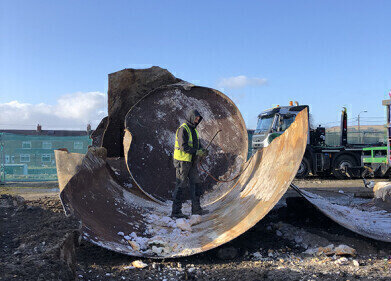Soil remediation
Sewage Sludge Dewatering Using High Efficiency Decanter Centrifuges
Apr 23 2009
Clean water is one of our most important resources. A characteristic of the modern waste water treatment is high technical and economic efficiency. The more efficient the treatment the higher the amount of generated sewage sludge. Depending on origin and pre-treatment, the composition of waste water is variable. Since requirements and legal stipulations for waste water treatment are getting more and more stringent, several processes for treatment have been developed. Accordingly, the composition of the produced sewage sludge is variable, too. The dewatered sewage sludge may be used for several end uses such as fertilizer, incineration or landfill.
All these requirements have one thing in common: the dewatered sludge must be as dry as possible and dewatering must be as economic as possible. In comparison to other dewatering measures the use of decanters is the most promising one for several reasons: Decanter centrifuges are suitable for the dewatering of all kinds of sewage sludge, for example for: anaerobic stabilization (digested sludge); aerobic-stabilization (AES sludge); activated sludge; aerobic and thermophilic stabilization (ATS sludge); raw sludge (primary sludge); mixed sludge and flotation sludge The sludge dewatered via decanter centrifuges is suitable for all kinds of purposes, for example: fertilizer in agriculture, incineration and landfill Figure 1: Photo of FLOTTWEG HTS DECANTERS® (Germany) in a sewage plant How a centrifugal decanter works The core item of the decanter is the rotating assembly which consists of the cylindrical/conical bowl, the scroll and the gear box. Feed enters the bowl via a centric feed pipe through ports in the scroll body. In the centrifugal field of the bowl the sludge is separated into a solids phase which is packed against the bowl wall and is being conveyed by the scroll to the conical part of the bowl. The clarified liquid phase leaves the bowl via ports at the cylindrical end. In these ports there are adjustable weir plates which allow an exact setting of the pond depth inside the bowl. The scroll rotates inside the bowl at a differential speed created by the gear box. In sewage sludge dewatering, it is usual to add polymer (flocculant) to the feed. Flocculants improve settling and formation of a compact solids cake by coalescing the fine solids in the sludge to clusters.The most critical parameters of a decanter centrifuge are: a) fixed parameters: bowl dimensions such as diameter, length, cone angle (bowl volume) and scroll design: number of leads and pitch b) variable parameters: bowl speed: creates the centrifugal field; differential speed: determines the residence time of the solids in the bowl and weir diameter: determines the pond depth in the bowl The performance of the centrifugal decanter is characterized by: cake dryness; centrate clarity (separation efficiency); and consumption of energy and polymer
Events
Carrefour des Gestions Locales de L'eau
Jan 22 2025 Rennes, France
Jan 29 2025 Tokyo, Japan
Feb 05 2025 Nantes, France
Feb 16 2025 Kampala, Uganda
Feb 26 2025 Chennai, India










